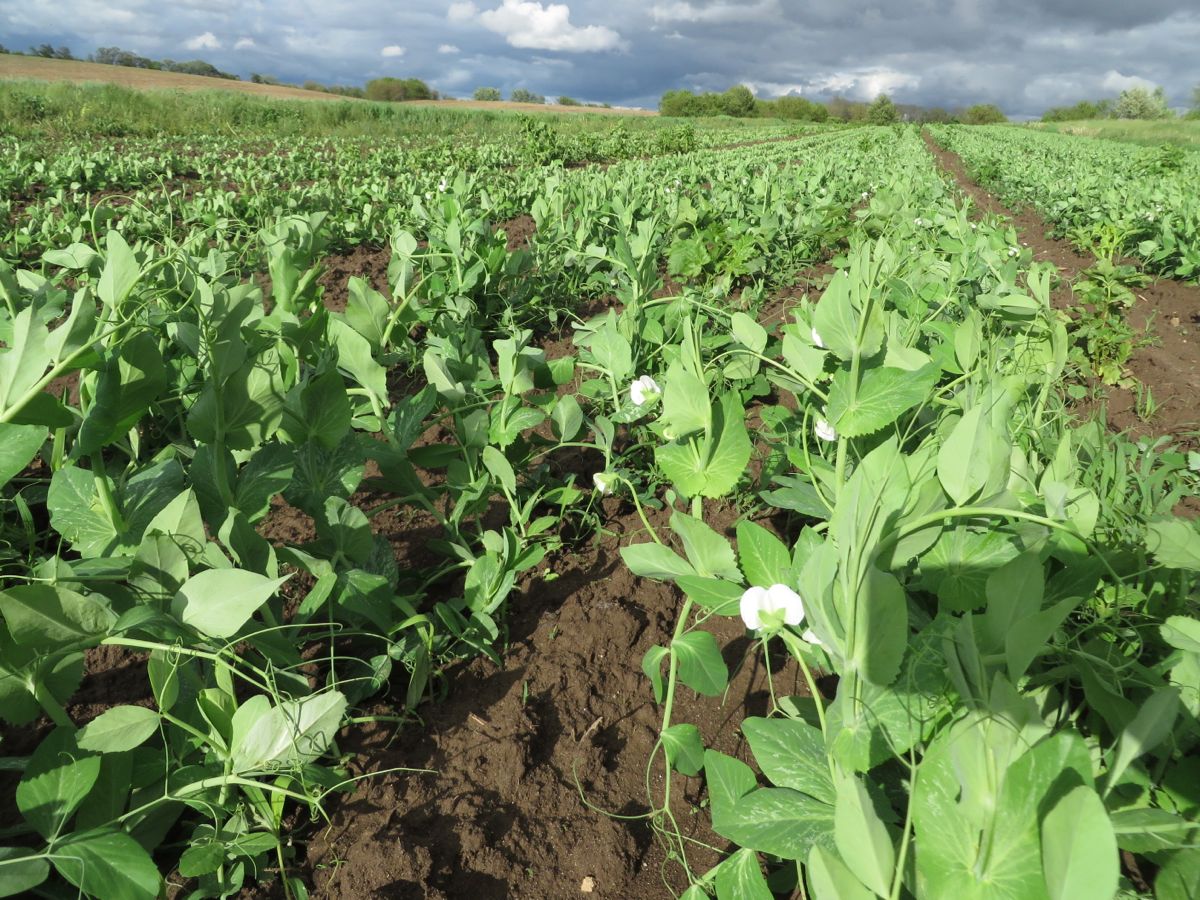Our tough mudder
- On: May 27, 2015
 3
3
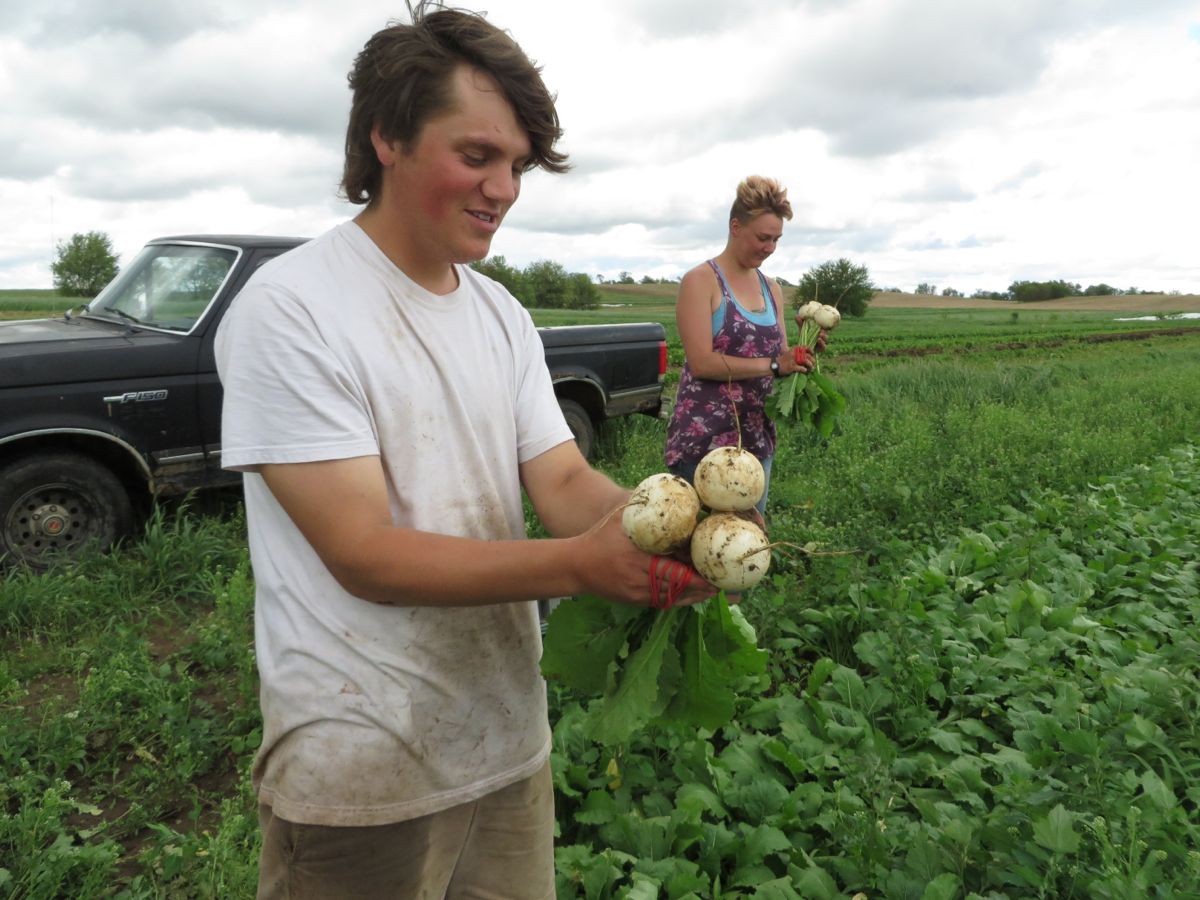
It was a muddy week for people and for vegetables. Above, Jory and Madeleine harvest white salad turnips shortly after the rain stopped.
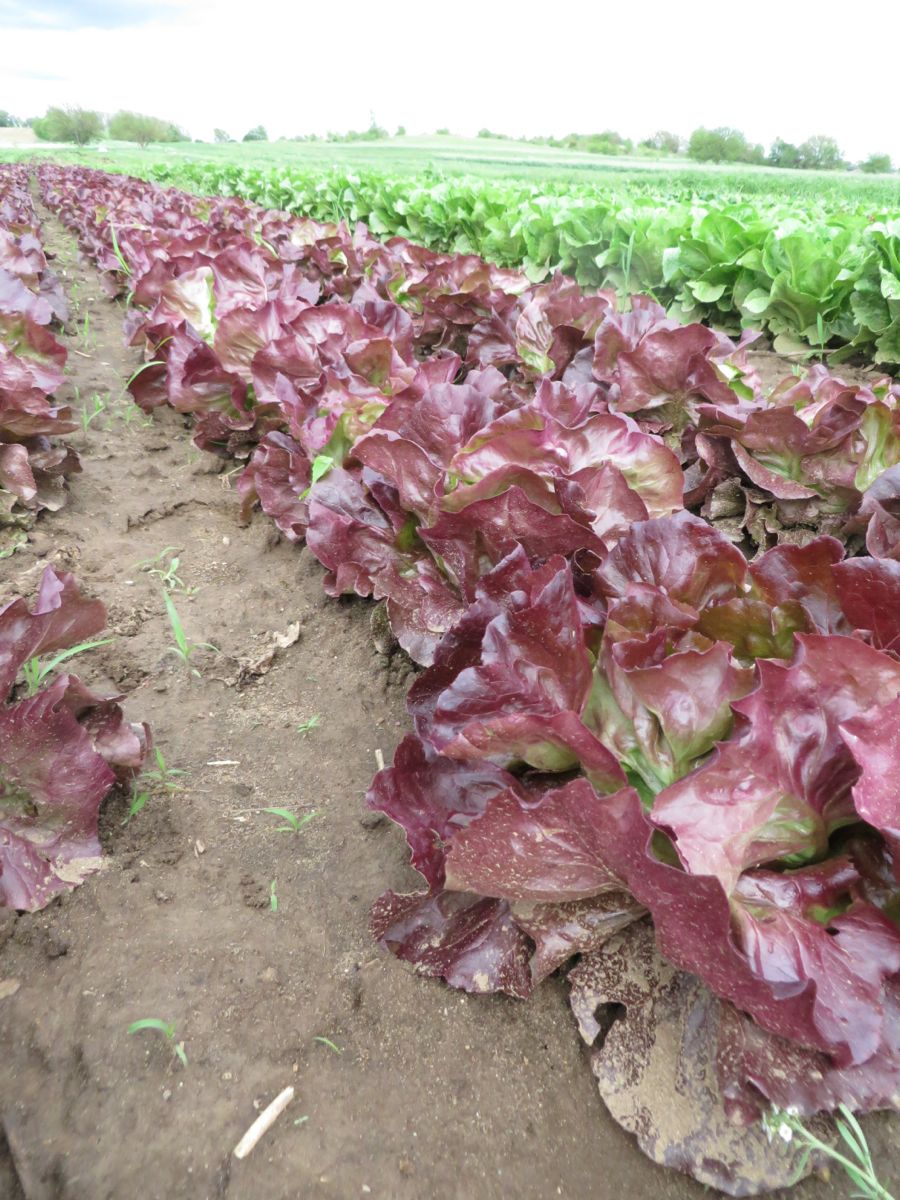
Heavy rains splash soil everywhere.
How to wash gritty lettuce and spinach
There were heavy rains this week. All the vegetables will need a little extra TLW (tender loving washing) this week. Vegetables that grow as a ‘head’ need extra attention after rainy weather because soil splashes into the head. Lettuce, bok choy, escarole, endive, turnip greens and spinach are all affected. Here is a technique to remove soil or grit. Run a sink or tub full of cold water. Cut the head of lettuce across the base so the leaves all fall apart. Cut it into smaller pieces if you wish. Submerge the cut lettuce in the water and swish gently. This week’s red bibb is VERY tender and fragile, so be gentle. Pull from the water and let drain. Repeat. The draining action pulls the dirt off the leaves. Repeat with a second tub of clean water if needed. If you don’t plan to eat all the lettuce (or other green) immediately, dry it in a salad spinner and store in a dry container.
June 1 check reminder
Many of you paid us with checks post-dated to June 1. Remember? I will deposit your June 1 checks on Monday June 1.
Farm News; two exciting forecasts
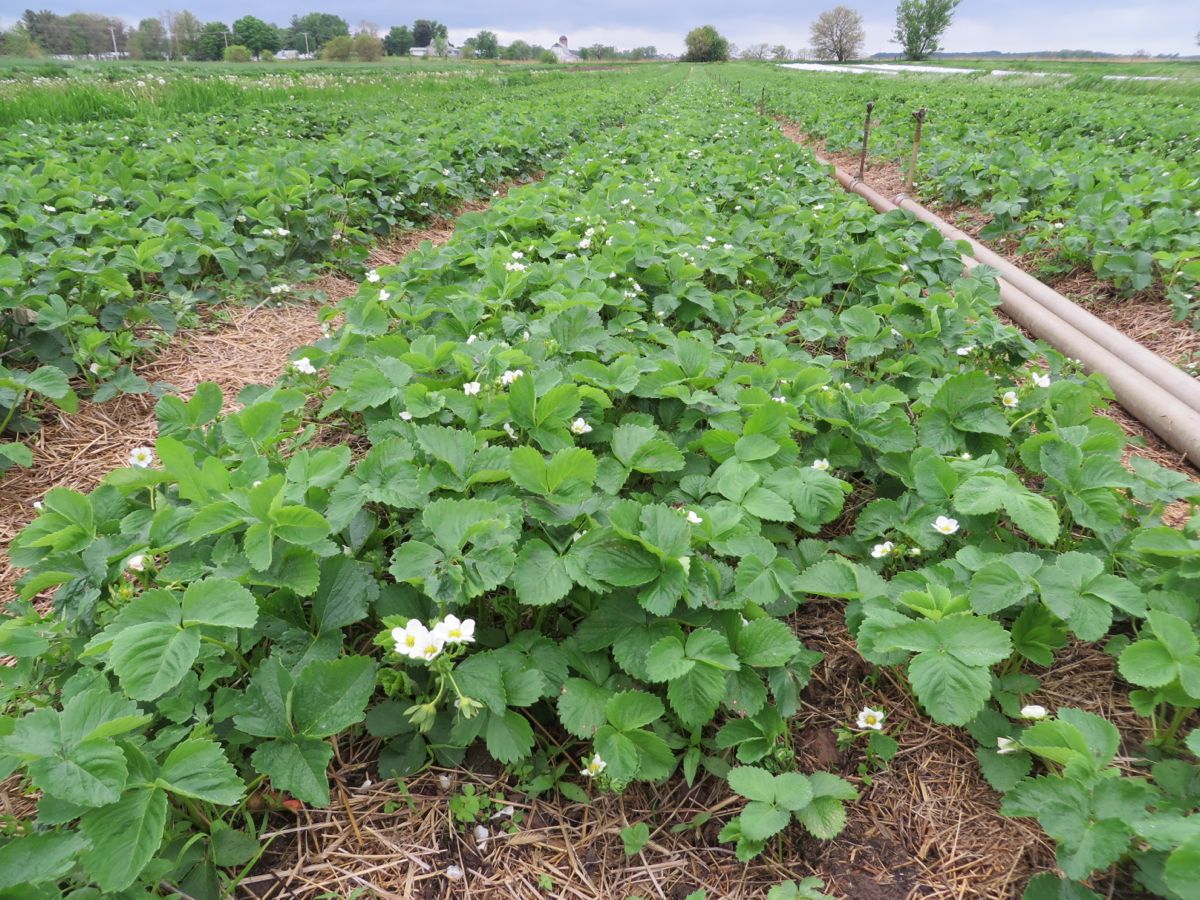
The strawberries are blossoming heavily and the berry field looks great. We expect to host strawberry u-picks for members during the last two weekends of June. Watch our emails for the dates, times and other information about the u-picks. Berry price will probably be the same as last year, $2.20/lb. Notice the irrigation pipe? We keep it in the field, just in case we need to irrigate to protect the blossoms and berries from frost. Steve has irrigated three nights so far this spring. We can’t take a risk with such a valuable (and treasured) crop.
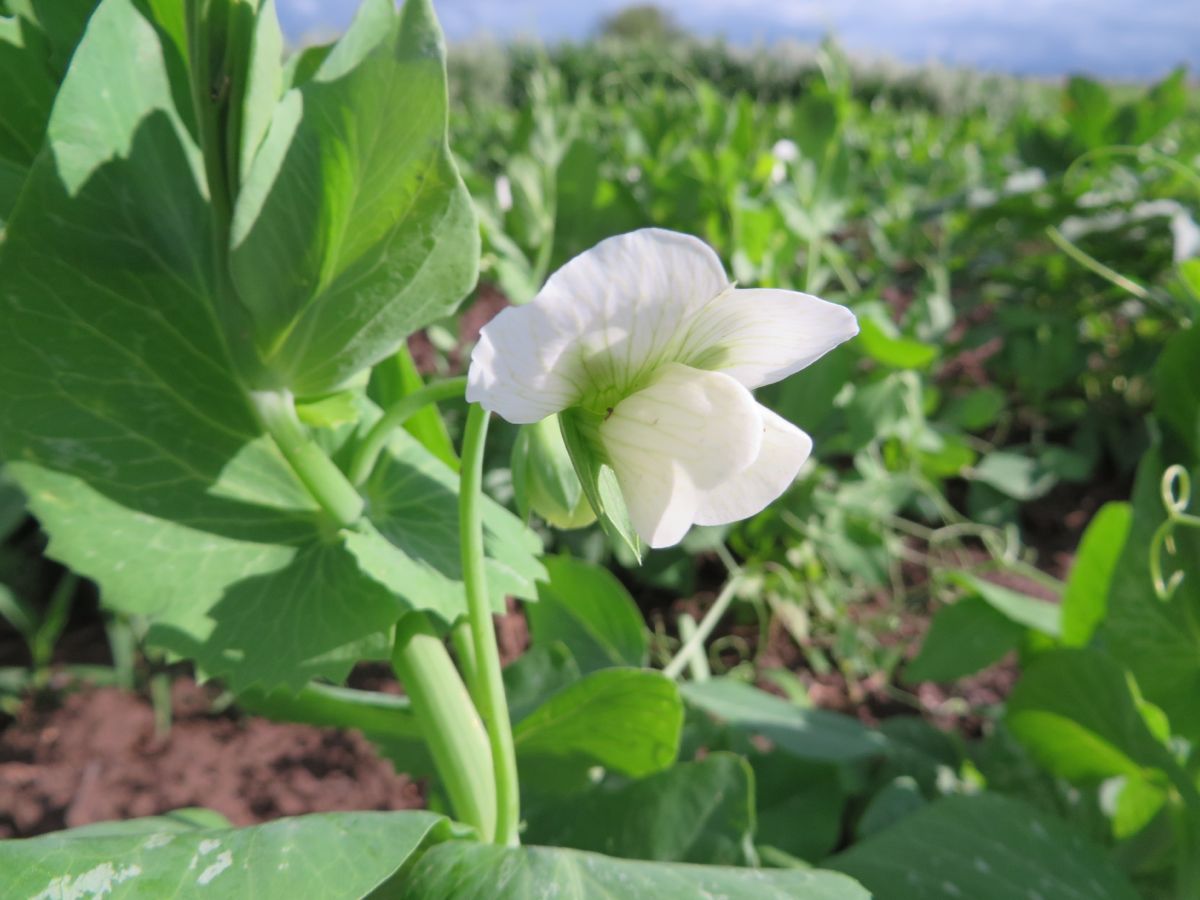
The peas have just begun blossoming. Best guess = there will be peas in the CSA boxes in three weeks. We don’t know if sugar snap peas or snow peas will be ready first. It’s a race.
Veggie List and Veggie Notes (5/28/15, week #2, green EOW)
We offer information the first week we pack a vegetable. Read last week’s newsletter for storage and cooking information for asparagus, rhubarb, and green garlic.
Asparagus, 1.3 lb
Bok choy, 1
Rhubarb, 1.5 lb
Red bibb lettuce
Spinach, 1 bunch
White salad turnips, 1 bunch
Parsnips, 1.75 to 2 lb
Green garlic, 1 bunch
Next week’s box will probably contain asparagus, lettuce, white salad turnips, scallions, some kind of spring green, and more. We might have spinach for you again next week.
Bok choy (large rosette with thick white stems and green leaves) – This Asian green is good for stir-frying or sautéing or in soup. You can think of the stems and leaves as two separate vegetables. The stems require longer cooking. The leaves will cook almost as quickly as spinach. Bok choy stores well, so feel free to pull off leaves as you need them, or use the whole head at once. Refrigerate in a plastic bag.
White salad turnips (bunched white roots with green tops) – I know that returning members look forward to these sweet and delicious turnips, which taste nothing like the turnips that are harvested in fall.
– Storage: Cover and refrigerate.
– Uses: Both the turnip roots and tops are edible. Slice the sweet roots and add to salads. They can be cooked and are especially good when lightly sauteed in butter. Stir as little as possible so they brown on at least one side. The turnips greens are excellent cooked. Treat them like mustard greens.
– Our favorite use: Slice the roots very thinly and combine with a mixture of rice vinegar, mirin, soy sauce, sesame oil. Eat immediately or marinate.
Parsnips (long white roots) – We had a bumper crop of parsnips last fall, so we left some in the ground for spring harvest. Parsnips are one of the few annual crops that we can overwinter in the field. Those long, white roots are not carrots, they are parsnips. The two vegetables are related. Unlike carrots, parsnips are rarely eaten raw. When cooked, parsnips are sweet and starchy. Brown them so the sugars caramelize, to give the best flavor. Here are our favorite ways to prepare parsnips:
– Parsnip fries are delicious: cut like French fries, coat very lightly with oil, place on a cookie sheet and roast in a hot oven until cooked through and browned.
– Substitute grated parsnips in a potato pancake recipe. They brown beautifully and are very tasty.
– We often pan-fry parsnips with onions and garlic.
THIS WEEK’S RECIPES
Comforting Classics
Rhubarb Cream Cheese Bars
Spinach and Almond Salad with Orange Honey Vinaigrette
Pureed Asparagus and Parsnip Soup
Bok Choy with Garlic
Steamed Parsnips with Maple Butter
Salad Turnip Pickle
Outside the Box Recipes
Star Anise Baked Rhubarb
Almost No Work Baked Spinach and Asparagus Risotto
Broth Infused Asparagus
Orecchiette with Spinach, Bok Choy and Ricotta
Parsnip Tart
Harissa Spiced Salad Turnip Salad
Kitchen Sink Recipe
This is a recipe that is very flexible — you can add just about many of the veggies from the box.
Quick and Easy Dinner Recipe

